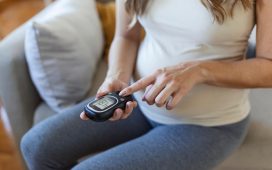The 66th Annual Clinical Meeting of the American College of Obstetricians and Gynecologists
The annual meeting of the American College of Obstetricians and Gynecologists was held from April 27 to 30 in Austin, Texas, and attracted more than 3,000 participants from around the world, including clinicians, academicians, allied health professionals, and others interested in obstetrics and gynecology. The conference highlighted recent advances in the prevention, detection, and treatment of conditions impacting women, with presentations focusing on the advancement of health care services for women worldwide.
In one study, Bethany T. Waites, B.A., of the Oregon Health & Science University in Portland, and colleagues found that a first trimester fasting plasma screening in women of advanced maternal age (AMA) allows for earlier diagnosis of preexisting glucose intolerance and treatment, which results in improved pregnancy outcomes.
“Our cost-effectiveness analysis showed that in a theoretical cohort of 10,000 AMA women, screening for preexisting glucose intolerance in the first trimester and initiating appropriate treatment would result in fewer preterm deliveries, cases of preeclampsia, macrosomic infants, cases of shoulder dystocia and brachial plexus injury, fewer neonatal deaths, fewer cases of intrauterine fetal demise, and fewer cases of cerebral palsy. Ultimately, this means that the first trimester screen saves money as well as quality-adjusted life-years for both the mother and infant,” Waites said. “The study suggests that using a fasting plasma glucose screen in the first trimester is a cost-effective way to detect preexisting glucose intolerance in the AMA population. The fasting plasma glucose screen is a relatively cheap and easy test to perform early in pregnancy.”
Abstract No. 220
In another study, Michael Cohen, M.D., of the Women & Infants Hospital of Rhode Island in Providence, and colleagues found that age and inpatient opioid use are key predictors of outpatient opioid use and should be analyzed for each patient to determine the optimal opioids to prescribe when leaving the hospital.
“Studies have shown that unused opioids following surgical procedures represent an important source of opioid abuse. Despite this, little data exist on how much to prescribe following gynecologic surgery,” Cohen said. “We sought out to determine which, if any, demographic factors are associated with increased use. We found that among age, body mass index, insurance status, referral source, comorbidity, and benign/malignant indication, only age was significantly correlated with increased use both inpatient and outpatient (P < 0.02). In an additional analysis, inpatient use significantly predicted outpatient use."
Abstract No. 8R
Peter Movilla, M.D., of the University of California in San Francisco, and colleagues found that physician adherence to postoperative opioid recommendations as suggested by the Enhanced Recovery After Surgery (ERAS) protocol is suboptimal, and, as a result, ERAS non-adherence contributes to the excessive quantity of opioids prescribed to patients.
“We learned that physicians were compliant only 62.2 percent of the time when it came to following the ERAS protocol recommendations for how many opioids patients should receive based on the type of benign gynecologic surgery they underwent,” Movilla said. “Overall, if a physician was adherent to the ERAS prescribing protocol they would give patients a mean of 81.1 morphine milligram equivalents, which equates to about 11 5-mg oxycodone oral tablets. However, the physicians who were not adherent to the ERAS protocol prescribed nearly three times that quantity, with a mean of 246.2 morphine milligram equivalents. That equates to nearly 33 5-mg oxycodone oral tablets being prescribed to their patients following benign gynecologic surgery.”
When the investigators contacted the patients following surgery, they found that of all the opioids prescribed during the study time frame, only 35.3 percent were utilized by one week after surgery.
“We learned that patients undergoing both hysteroscopic procedures and laparoscopic adnexal surgery utilized a statistically significant higher quantity of opioids if their surgeon and prescriber were not adherent to the ERAS recommendations,” Movilla said. “As institutions continue to implement recommendations for opioid prescribing following benign gynecologic surgery, they may look to recommend lower quantities of total opioids based on our study results.”
Abstract No. 31Q
Copyright © 2018 HealthDay. All rights reserved.







